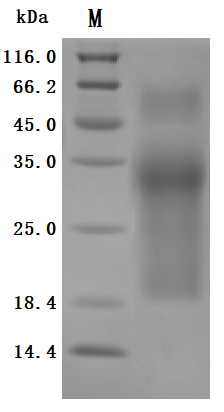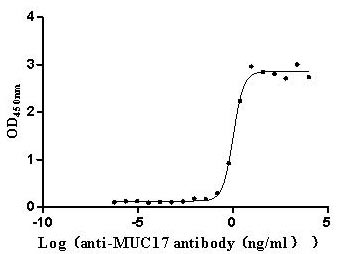This Human MUC17 (Mucin-17) recombinant protein was produced in mammalian cell, where the gene sequence encoding human MUC17 (4131-4390aa) was expressed with the C-terminal 10xHis tag. The purity of this MUC17 protein was greater than 95% by SDS-PAGE. The activity was tested.
As a newly discovered mucin, MUC17 (Mucin-17) belongs to the membrane-bound mucin family. Mucins are highly O-glycosylated linear glycoproteins secreted by higher organisms to protect and lubricate epithelial cell surfaces and are involved in the regulation of immune responses, inflammation, adhesion, and tumorigenesis. MUC17 is present in epithelial cells in specific human tissues. Its functions in epithelial cells are primarily to provide cytoprotection, maintain luminal architecture, signal transduction, and confer anti-adhesion properties to cancer cells that have lost apical/basolateral polarization. The biological function of MUC17 is thought to be to maintain the integrity of the mucosal barrier in the gut, such as mucosal restoration.








